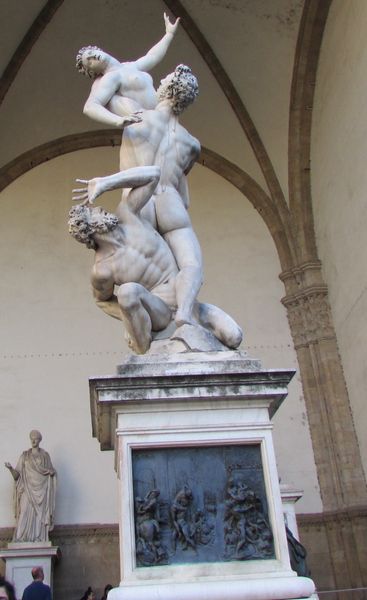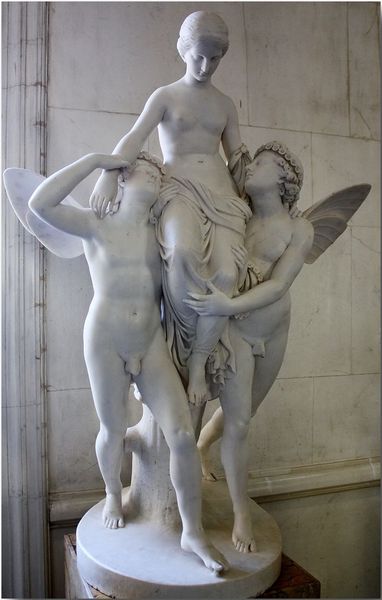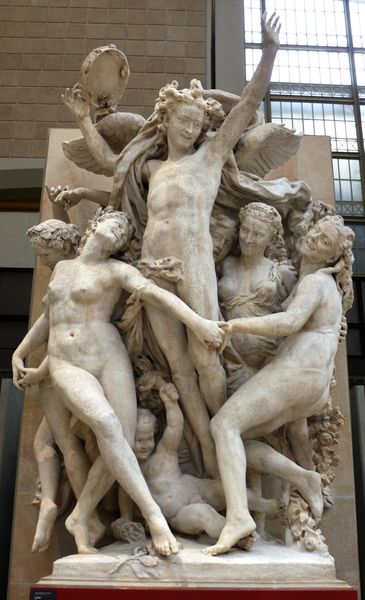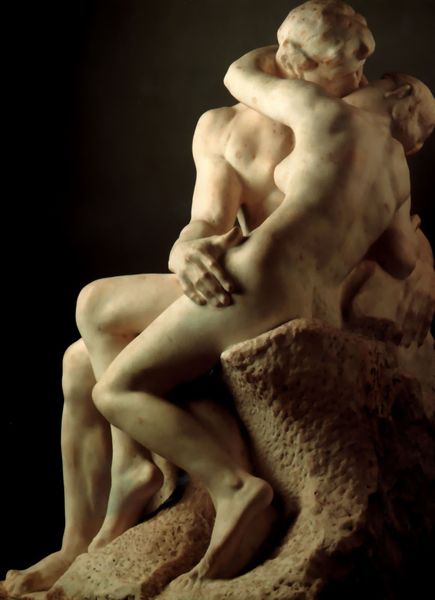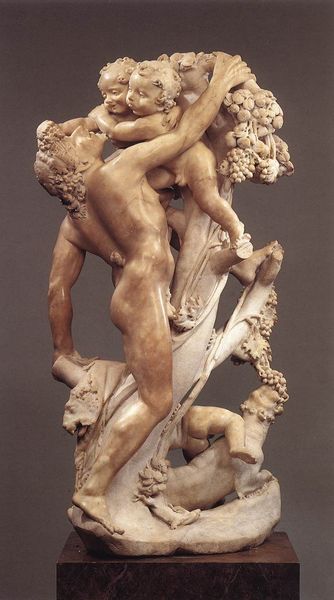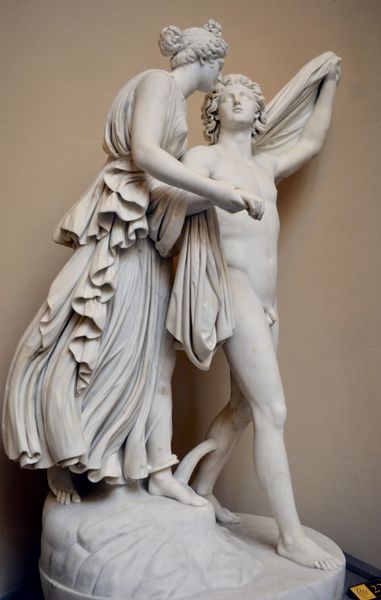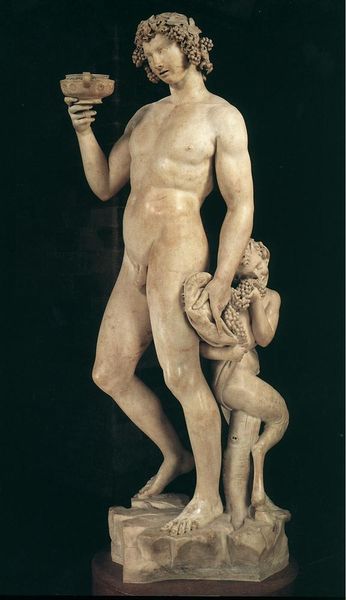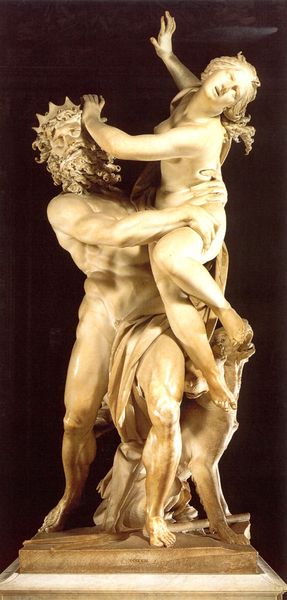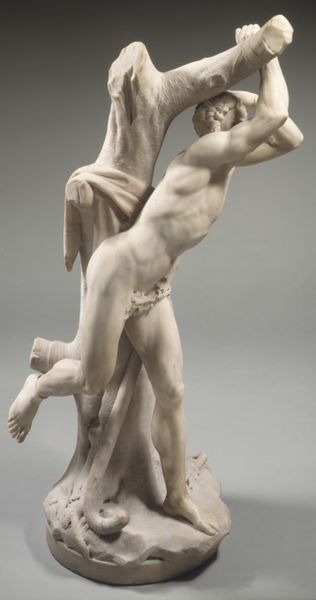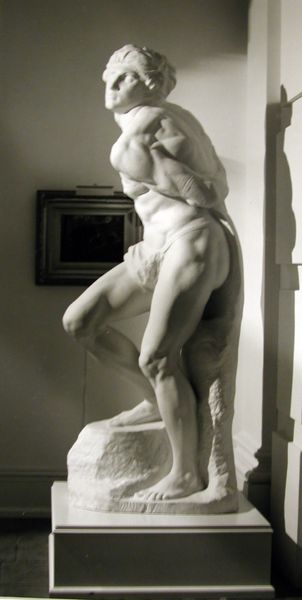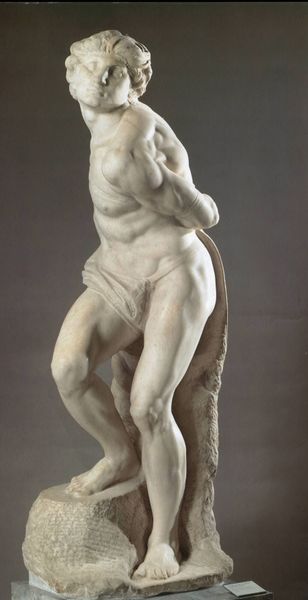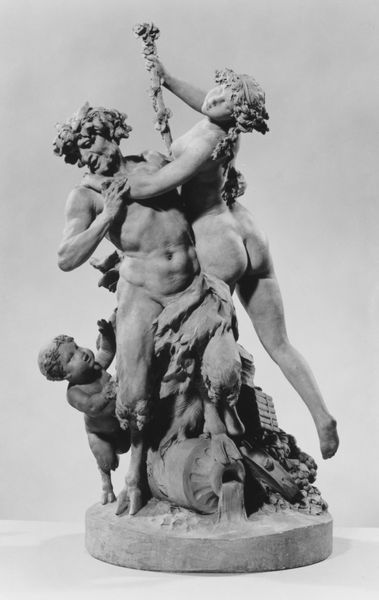
carving, sculpture, marble
#
carving
#
allegory
#
structure
#
sculpture
#
mannerism
#
figuration
#
11_renaissance
#
sculpture
#
group-portraits
#
history-painting
#
marble
#
nude
Copyright: Public domain
Editor: Here we have Giambologna’s marble sculpture, "Abduction of a Sabine Woman," created around 1583. It depicts three figures in a dynamic, spiraling composition. I'm immediately struck by its sheer physicality and the dramatic tension between the figures. How would you interpret this piece from a formal perspective? Curator: The Mannerist aesthetic is particularly evident in Giambologna's "Abduction". Note the elegant, elongated forms and the *figura serpentinata*, a serpentine, spiraling pose which draws the eye upward. Observe how the artist uses contrasting textures, from the polished smoothness of the flesh to the rougher carving of the hair, creating a visually engaging surface. The lack of a singular viewpoint forces the viewer to circumnavigate the sculpture, revealing new perspectives and emphasizing its three-dimensionality. What do you think of the poses and how they are arranged together? Editor: They feel… unnatural, almost exaggerated. The upward reach of the Sabine woman, the contorted posture of the man carrying her…it’s all very theatrical. Curator: Precisely. The figures are not simply arranged, they are interwoven. Consider how Giambologna manipulates space and form to create a sense of instability. This deliberate disruption of balance, a hallmark of Mannerism, forces a constant negotiation with the sculpture's form. Look at the void it contains – this lack becomes almost as important as what exists. Editor: So it's less about accurately representing the human form and more about manipulating it to achieve a certain… visual effect? Curator: Exactly. The sculpture's meaning resides not in its narrative content alone, but in the formal relationships between its elements—the tension, the balance, the dynamic interplay of line and form. These formal choices communicate drama, tension, and a sense of unease, characteristic of the Mannerist style. Editor: I see it now. It's like the story is secondary to the way it's told through the forms themselves. Thanks so much for pointing this out, it really enriches how I perceive it. Curator: My pleasure. Analyzing art through a formalist lens opens new ways of thinking and appreciating art and its intrinsic parts.
Comments
No comments
Be the first to comment and join the conversation on the ultimate creative platform.
